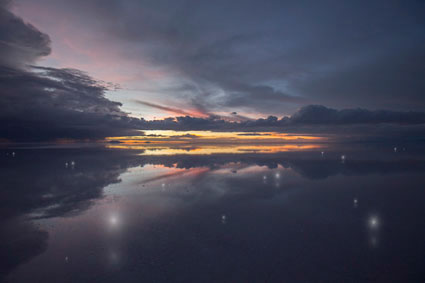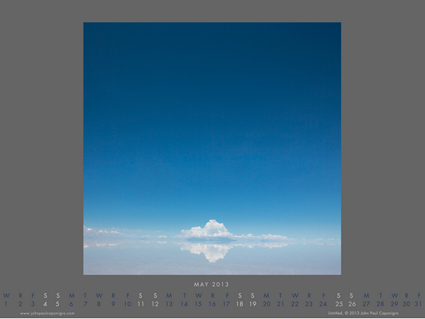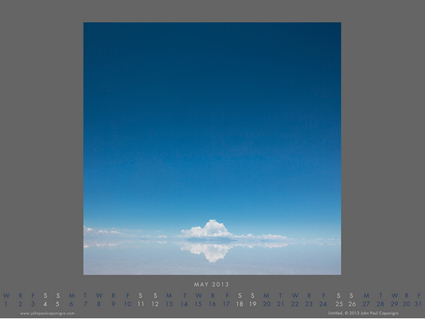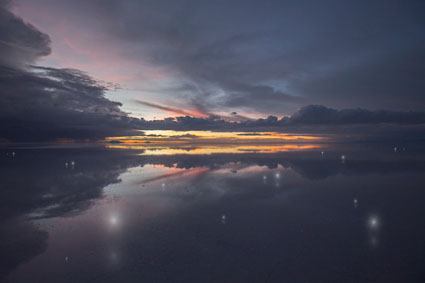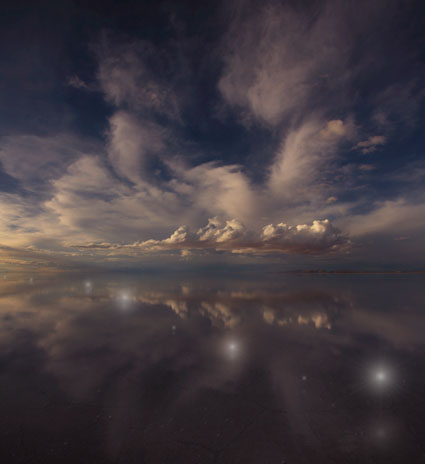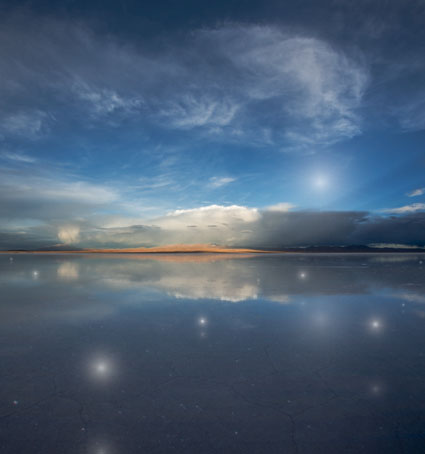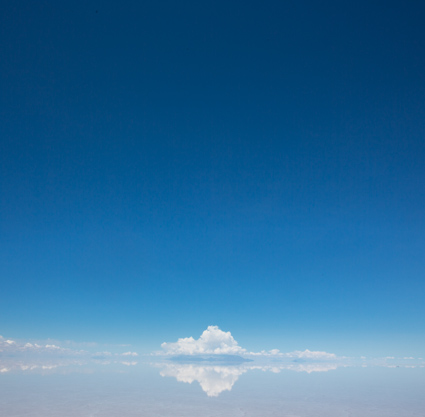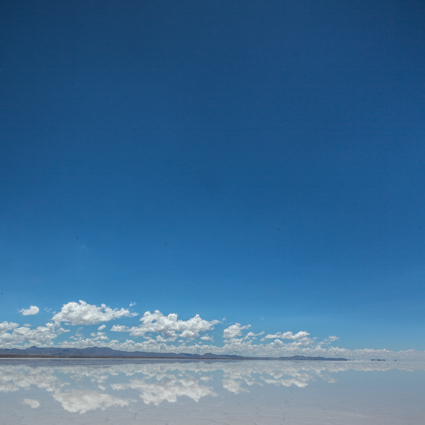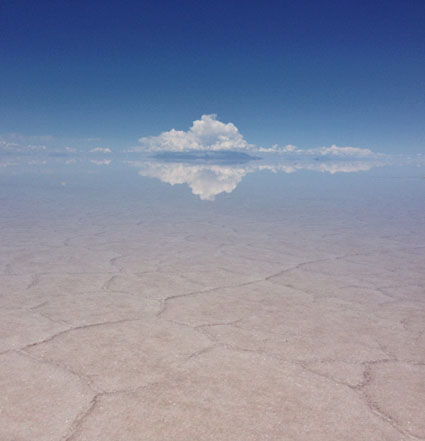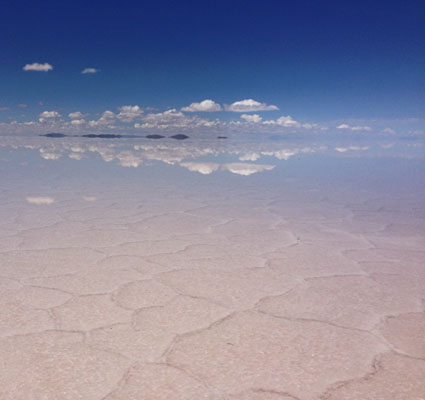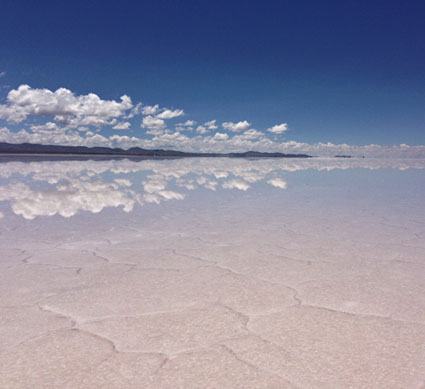Find The Best Time – The Story Behind The Photograph
Constellation VIII, Uyuni, Bolivia, 2013
It had been a very long drive. Looking for other exotic locations along the way, we (I was traveling with colleagues Seth Resnick and Eric Meola) had taken the long way around, traveling for five days at high altitude, up to 5,000 meters, through Bolivia’s Altiplano to Salar de Uyuni the largest salt desert in the world. On arrival we began looking for water, which was seasonal and unpredictable. Unsuccessful at first, at first we found only mud beneath a cracked crust, later we found a few wet stains, still later a larger area slick enough to glisten in the sun, much later a larger slick against a mountain that offered limited reflections, and finally, late on the second day we found a large expanse of water. But there was wind and in many areas the water was too deep to access. We waited at our nearby hotel, made completely of salt; the walls and floors and tables and desks and chairs were all made of salt. Returning for the day’s final light, we found the wind had moved the water and then died down leaving a glassy sheet of perfect reflections as far as the eye could see, ringed by clouds. Walking on/in it was disorienting. You felt like you were walking on/in the sky. And then the color began to change and bloom. It was divine. We spent hours photographing, until the light faded and the winds picked up again. We returned the next day, our final day, to find similar almost ideal conditions and later the new introduction of lightning storms and rainbows behind us. We felt exceptionally fortunate.
If there was no rain, there would be no water to hold reflections; we would have been limited to making photographs of cracked salt patterns, a few piles of salt, and the distant mountains. If there were no clouds, there would be little to reflect. Even though this type of weather was typical at this time of year, and this time of year only, there were no guarantees. We had not only timed it just right and planned for enough time to succeed in, we also got lucky.
Stack the odds in your favor and do your research to know when optimal conditions are most likely to occur. There are situations where you can take actions to increase the probability of ideal conditions occurring and there are situations when you can’t – and knowing which situation you’re in is important. In situations where you can’t be more proactive, it’s wise to plan for a little extra time, in case you have to wait for ideal conditions to arise. It’s never easy to know when it’s best to move on and when it’s best to wait it out. Prior experience helps but it will only get you so far. Keep your eye on the weather and seek out local knowledge whenever possible.
Questions
How can you best prepare to make the most of optimal conditions?
What are optimal conditions for the task at hand?
When are you most likely to experience optimal conditions?
Is there anything you can do to increase the likelihood of optimal conditions occurring?
Is there anything you can do to improve current conditions?
When is it better to move forward rather than wait?
When is it better to take a new approach rather than return?
Find out more about this image here.
View more related images here.
Read more The Stories Behind The Images here.
Find out about my Atacama Desert Argentina digital photography workshop.


